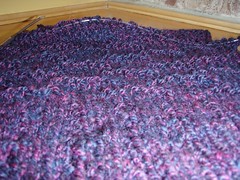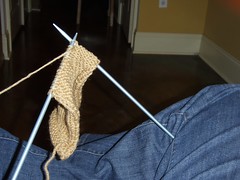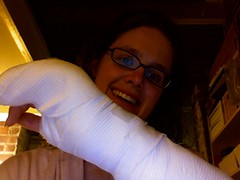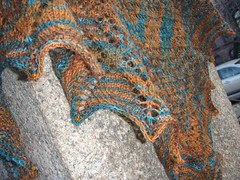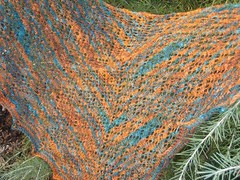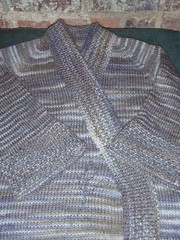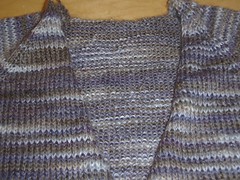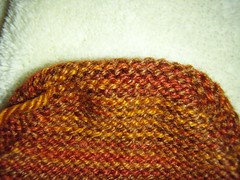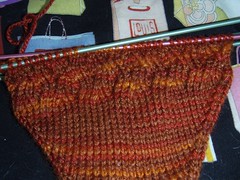I've been following the discussion on Donna's blog (
part 1 and
part 2), and was going to post a comment but then got a little wordy. So I'm going to write here instead. To sum up, she wrote about how stressful she finds tech editing knitting patterns, because there are so many places errors can be introduced, and because she worries about the errors lurking in her patterns that no one's noticed yet.
I'm the queen of worrying about the moment when what I've done (which has seemed fine up till that point) will suddenly be revealed as inadequate, so of course I worry about this too.
So you can imagine how much I dread opening emails about my patterns. The vast majority (of the tiny percentage of the tiny number of knitters who knit my patterns and then decide to write me) are just saying they like their FOs, and maybe sending me pictures, and once I peek at the email through the cracks between my fingers and can see that, it's fine. I love those emails after I open them. (Especially pictures, and links to blog posts! Send more!)
Of course I've gotten a few emails pointing out mistakes and/or things I've explained weirdly. I've fixed the mistakes, and have changed the way I explain things for the future. While these emails confirm my worries, I'm happy to be able to correct things and spare the next knitter.
But sometimes the knitter thinks there's a mistake in the pattern where there isn't one, and for some reason those emails are always rude.
Dear Rebecca,
You idiot! Your pattern is stupid, your math abilities are non-existent, and your stitch counts don't add up. I had 12 stitches and I decreased 2 and I have 9 left, not 10 like your pattern says! Every knitter I know has read the directions and they agree that there should be 9 stitches after the decreases. Fix it before I waste any more time on your pattern, which is ugly anyway!
Love,
A Knitter
So I recheck my math, then write back explaining how first you have 12 and you decrease 1 and have 11, then decrease 1 a second time and have 10, as many different ways as I can. I'm polite, in case it turns out that I've checked my math incorrectly, and the pattern really does have a mistake.
No one has ever written back to say thanks for my time, apologize for having called me an idiot, or even acknowledge that they got my email. Argh! Couldn't they have been polite, just in case?
My other least favorite email is only least favorite in retrospect. Every so often I'll get am email from someone who doesn't understand a step in my directions. I review the directions, then write back explaining the step in another way, and pointing out blogs and websites with other explanations or instructions with pictures, then send it off to the knitter, feeling helpful.
Mostly, they just write back thanks, but couple of times they've emailed back, "Thanks! I'm sure this will help when I get to that step!" I understand that it's important to read through and understand directions before you begin, but it's also important to have some faith in your abilities and in the pattern, and believe that once you reach the step that seemed confusing and can do the directions as you read them, it may make sense. If it doesn't, that's the time to ask for help.
In this case, I guess it's not actually the knitters I'm bothered by, but the writers of learn to knit books who tell you to understand the pattern before you begin. You do need to understand some things (the abbreviations, whether there are any "and at the same time..." directions, and which parts of the pattern apply to you, etc), but I don't think you necessarily need to understand how the directions turn into the knitted item. Maybe it works for some people, but my brain isn't quite spatial enough that I could visualize how heels worked the first time I read sock directions, or that I could see how an amoeba folded into a baby surprise jacket. But it still worked when I did it--and now that I've made a socks and turned an amoeba into a jacket, I get it. I don't think the learn to knit authors meant "be able to visualize" by " understand," but who knows!
So, how much do you try to understand before you start knitting?


